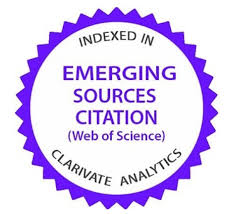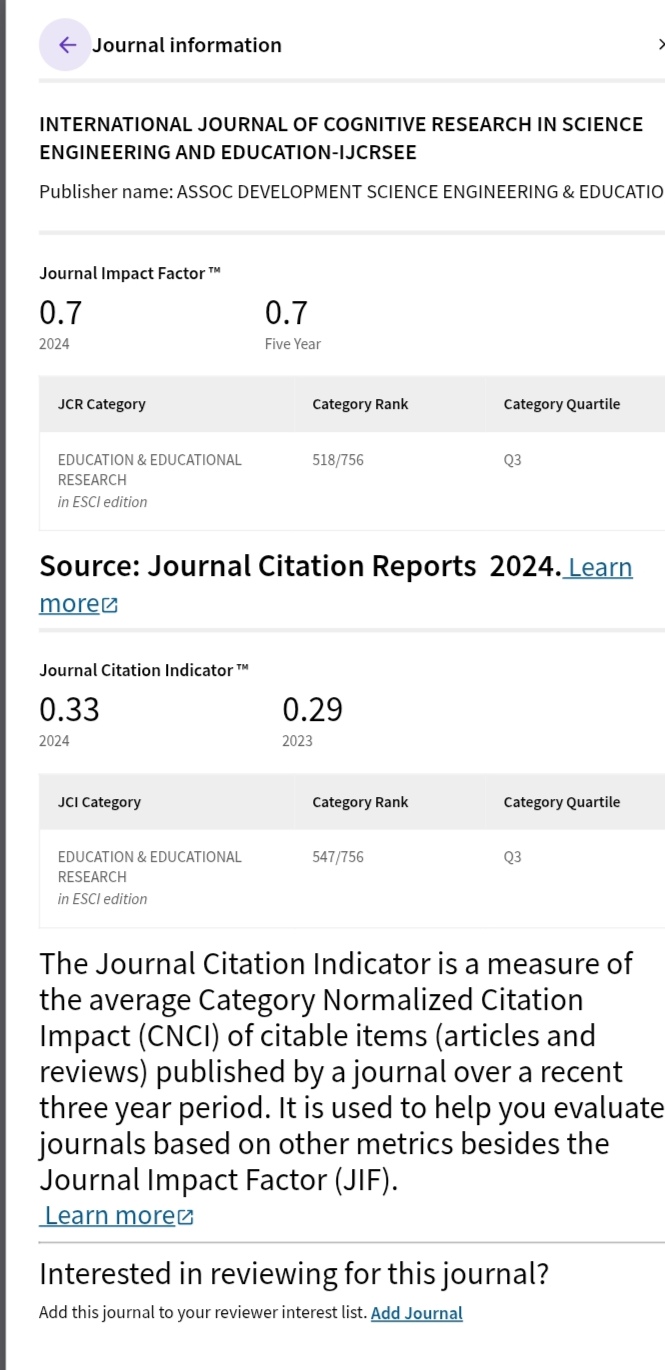Basic Needs Satisfaction and Conscious Motives for Sports Activities of Juniors
DOI:
https://doi.org/10.23947/2334-8496-2024-12-1-201-207Keywords:
need, motivation, motive, conscious motives, sport, juniorAbstract
Athletic motivation is actively studied in the sports psychology. The study of the juniors’ motivation is crucial for exploring the reasons to quit the sport, the fac-tors that reduce an athlete’s productivity, the principles of building support pro-grams for young athletes. The purpose of the study was to study the basic needs satisfaction and the hierarchy of young athlete conscious motives. The study involved juniors, in the amount of 133 people aged 13-16 years (M=15.1; SD=1.6; 59.4% men). The following methods were used: the essay “Why I came into sports”, “Method of paired comparisons” by V.V. Skvortsov (modified by I.A. Akindinova), as well as statistical methods (descriptive statistics, W - Kendall, Chi-squared test, Kruskal-Wallis H - test). Personal, professional and status conscious motives were found out to form a complex motivation for sports activities. Conscious motives for sports activities differ among juniors in various sports. The least satisfied needs are those for acceptance needs and self-expression. The type of sport does not determine the satisfaction of the junior needs. The prospect of the study is to create a model of motivation for a young athlete. The results can be used in the activities of sports institutions.
Downloads
References
Babushkin, E. G., & Antipin, V. B. (2006). Methodology for the sports motivation formation by meeting needs of young boxers at the stage of initial sports specialization. Omsk Scientific Bulletin, 10(49): 179-183.
Beckmann, J. (2020). Achievement motivation and motivational and volitional processes in sports. Motivation Science, 6(3), 192-194. https://doi.org/10.1037/mot0000197 DOI: https://doi.org/10.1037/mot0000197
Çağlar, E., & Aşçı, F. H. (2010). Motivational cluster profiles of adolescent athletes: an examination of differences in physical-self perception. Journal of sports science & medicine, 9(2), 231-238. PMID: 24149690; PMCID: PMC3761730.
Dautov, D. (2020). Procrastination and laziness rates among students with different academic performance as an organizational problem. In E3S web of conferences (Vol. 210, p. 18078). EDP Sciences. https://doi.org/10.1051/e3sconf/202021018078 DOI: https://doi.org/10.1051/e3sconf/202021018078
Đurović, D., Veljković, A. A., & Petrović, T. (2020). Psychological aspects of motivation in sport achievement. Facta Universitatis, Series: Physical Education and Sport, 18, 465-474. https://doi.org/10.22190/FUPES190515044D DOI: https://doi.org/10.22190/FUPES190515044D
Dyatlova, A.A., Rotaryanu, Yu.M., & Chernyavskaya, V.S. (2013). Characteristics of motivation of sports activity. The world of science, culture, and education, 6(43), 172-174. URL: http://cyberleninka.ru/article/n/harakteristiki-motivatsii-sportivnoy-deyatelnosti
Gaudreau, P., & Braaten, A. (2016). Achievement goals and their underlying goal motivation: Does it matter why sport participants pursue their goals?. Psychologica Belgica, 56(3), 244. https://doi.org/10.5334/pb.266 DOI: https://doi.org/10.5334/pb.266
Gucciardi, D. F. (2010). Mental toughness profiles and their relations with achievement goals and sport motivation in adolescent Australian footballers. Journal of sports sciences, 28(6), 615-625. https://doi.org/10.1080/02640410903582792 DOI: https://doi.org/10.1080/02640410903582792
Guedes, D. P., & Netto, J. E. S. (2013). Sport participation motives of young Brazilian athletes. Perceptual and Motor Skills, 117(3), 742-759. https://doi.org/10.2466/06.30.PMS.117x33z2 DOI: https://doi.org/10.2466/06.30.PMS.117x33z2
Homan, K. J., Crowley, S. L., & Sim, L. A. (2019). Motivation for sport participation and eating disorder risk among female collegiate athletes. Eating Disorders, 27(4), 369-383. https://doi.org/10.1080/10640266.2018.1517527 DOI: https://doi.org/10.1080/10640266.2018.1517527
Ilyinsky, S. V., & Ilyinsky, N. S. (2013). Features of motivation of athletes in various sports. Bulletin of the Samara Humanitarian Academy, Ser. Psychology, (1), 75-84. URL: https://cyberleninka.ru/article/n/osobennosti-motivatsii-sportsmenov-v-razlichnyh-vidah-sporta
Jung, Y. S., Kang, H., & Jang, S. (2021). The Effects of High School Basketball Player’s Sports Participation Motivation on Achievement Goal Orientation and Achievement Behaviors. Iranian Journal of Public Health, 50(10), 1953. https://doi.org/10.18502/ijph.v50i10.7495 DOI: https://doi.org/10.18502/ijph.v50i10.7495
Kovács, K., & Kovács, K. E. (2021). Using the behavioural regulation in an Exercise Questionnaire (BREQ–2) in Central and Eastern Europe: evidence of reliability, sociocultural background, and the Effect on Sports activity. International Journal of Environmental Research and Public Health, 18(22), 11834. https://doi.org/10.3390/ijerph182211834 DOI: https://doi.org/10.3390/ijerph182211834
Kozhukhar, G., Belousova, A., & Breus, E. (2020). Attitudes in the motivational sphere and Change readiness of university students. In E3S Web of Conferences (Vol. 210, p. 18009). EDP Sciences. https://doi.org/10.1051/e3sconf/202021018009 DOI: https://doi.org/10.1051/e3sconf/202021018009
Kuzmin, E. B., Aziullin, A. R., Denisenko, Y. P., Ionov, A. A., Geras’ kin, A. A., & Andryushhishin, I. F. (2016). Sports motivation as a mental state of an athlete’s personality. Human Health, Theory and Methodology of Physical Culture and Sports, 1(2), 97-110. URL: https://www.elibrary.ru/item.asp?id=25914245
Leidl, D. (2009). Motivation in sport: Bridging historical and contemporary theory through a qualitative approach. International Journal of Sports Science & Coaching, 4(2), 155-175. https://doi.org/10.1260/174795409788549517 DOI: https://doi.org/10.1260/174795409788549517
Liao, Z.F. (2013). Discussion on Chinese High-level Volleyball Athletes’ Sport Motivation. In: 2013 The fourth international conference on information, communication and education application (ICEA 2013), PT 1, Hong Kong, PEOPLES R CHINA, 30: 381-385, INFORMATION ENGINEERING RESEARCH INST, USA100 CONTINENTAL DR, NEWARK, DE 19713 USA.
Martinent, G., Decret, J. C., Guillet-Descas, E., & Isoard-Gautheur, S. (2014). A reciprocal effects model of the temporal ordering of motivation and burnout among youth table tennis players in intensive training settings. Journal of Sports Sciences, 32(17), 1648-1658. https://doi.org/10.1080/02640414.2014.912757 DOI: https://doi.org/10.1080/02640414.2014.912757
Martynova, V.A., Arshinnik, S.P., & Avdeev, M.V. (2022). Analysis of motivation of athletes to sports activity at the initial stages of sports training. Modern problems of science and education, 5, 49-49. https://doi.org/10.17513/spno.32102 DOI: https://doi.org/10.17513/spno.32102
Matej, T., Maks, T., Katja, C., & Miran, K. (2007). Model of sport motivation. In: Kondric, M., FurjanMandic, G. (eds.), PROCEEDINGS BOOK OF THE 10TH ANNIVERSARY ITTF SPORTS SCIENCE CONGRESS, Zagreb, CROATIA, 272-280, UNIV ZAGREB, FAC KINESIOLOGYHORVACANSKI ZAVOJ 15, ZAGREB, HR-10000, CROATIA.
Mizuno, M., Hochi, Y., Inoue, M., Kaneko, I., & Yamada, Y. (2012). Construction of the integrated model for practical career support to the professional athletes. Work, 41(Supplement 1), 5767-5768. https://doi.org/10.3233/WOR-2012-0945-5767 DOI: https://doi.org/10.3233/WOR-2012-0945-5767
Monacis, L., De Palo, V., & Sinatra, M. (2014). Sportspersonship behaviours: An exploratory investigation of antecedents. International Journal of Sport Psychology, 45(3), 231-245. https://doi.org/10.7352/IJSP2014.45.231
Nurgalieva, A.G. (2018). Content features of motivation for sports activities in adolescents. Saint Petersburg Educational Bulletin, 4-5 (20-21), 107-112. URL: https://cyberleninka.ru/article/n/soderzhatelnye-osobennosti-motivatsii-k-sportivnoy-deyatelnosti-u-podrostkov
Ong, N. C. (2019). Assessing objective achievement motivation in elite athletes: A comparison according to gender, sport type, and competitive level. International Journal of Sport and Exercise Psychology, 17(4), 397-409. https://doi.org/10.1080/1612197X.2017.1349822 DOI: https://doi.org/10.1080/1612197X.2017.1349822
Sari, I. (2015). An investigation of imagery, intrinsic motivation, self-efficacy and performance in athletes. The Anthropologist, 20(3), 675-688. https://doi.org/10.1080/09720073.2015.11891773 DOI: https://doi.org/10.1080/09720073.2015.11891773
Schmid, M. J., Charbonnet, B., Conzelmann, A., & Zuber, C. (2021). More success with the optimal motivational pattern? A prospective longitudinal study of young athletes in individual sports. Frontiers in psychology, 11, 606272. https://doi.org/10.3389/fpsyg.2020.606272 DOI: https://doi.org/10.3389/fpsyg.2020.606272
Uvarova, G., Krasnova, E., Mansurova, I., Korochentseva, A., & Ezhak, E. (2016). Motivation sphere peculiarities of students with different reflexivity levels. In 3rd International Multidisciplinary Scientific Conference on Social Sciences and Arts SGEM 2016 (pp. 231-236). https://www.sgemsocial.org/index.php/elibrary-research-areas?view=publication&task=show&id=4740
Zernova, T.I. (2017). Features of motivation, responsibility and self-regulation of behavior of athletes of different ages involved in football. Topical issues of physical culture and sports, 19, 103. URL: https://www.elibrary.ru/item.asp?id=30553933
Published
How to Cite
Issue
Section
Categories
License
Copyright (c) 2024 Alla Belousova, Svetlana Gorshkova, Yulya Tushnova

This work is licensed under a Creative Commons Attribution 4.0 International License.
Plaudit
Accepted 2024-04-18
Published 2024-04-24











